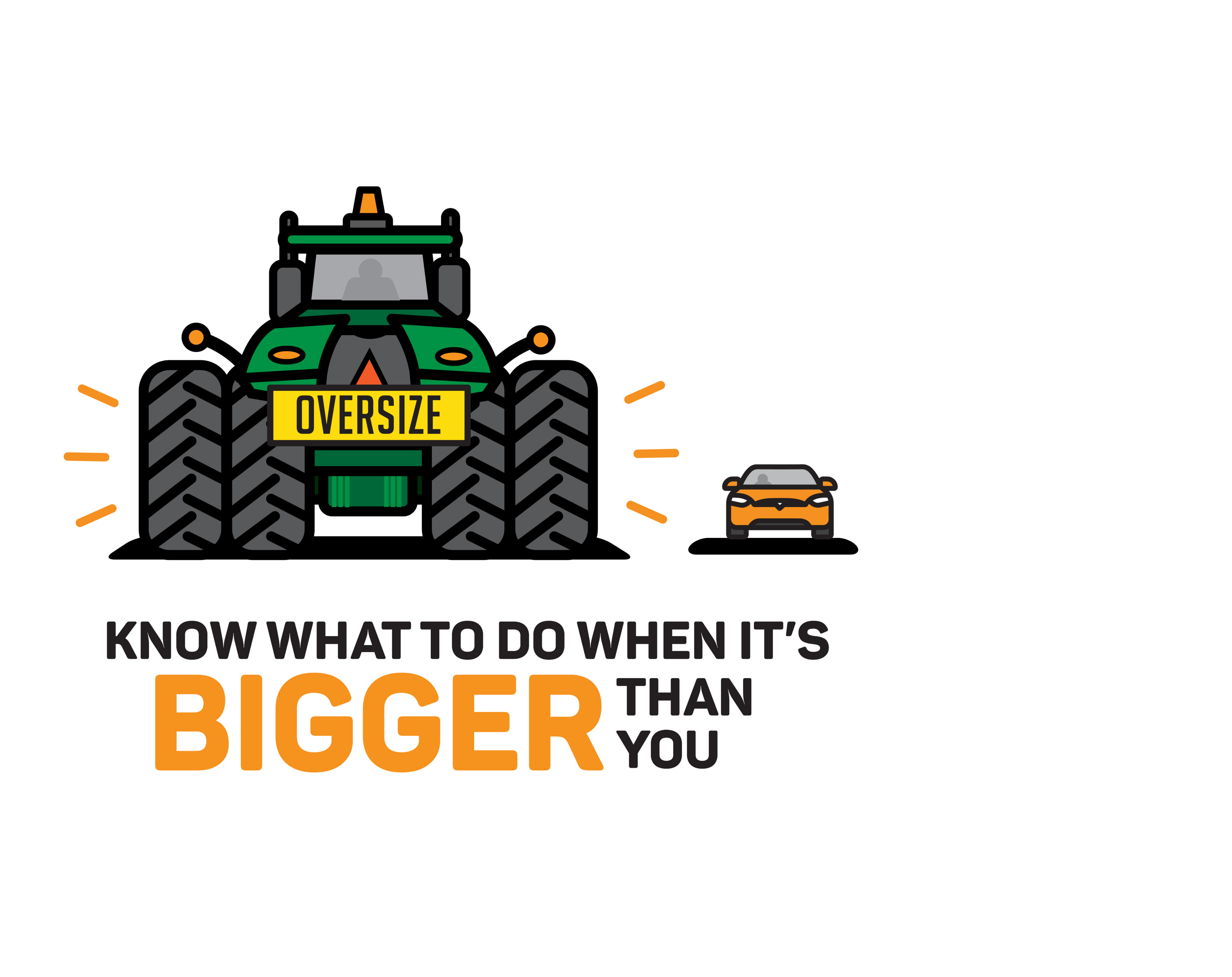Regional and long distance driving
As the largest state in the country, a road trip in Western Australia may include travelling on regional roads and covering long distances. Our unique road network presents challenges for both local and visiting drivers, so it’s best to plan ahead and know what to expect when travelling on WA roads.
Travelling across Western Australia by road is one of the best ways to see the state and can be an exciting and memorable journey. However, driving conditions across the state, particularly in regional areas may not be what you are used to. You may encounter unsealed roads, road trains, wildlife, bushfires, flooding or other extreme weather. Planning your trip, knowing the road rules and being prepared for the unexpected are important to ensure you reach your destination safely.
For the ultimate road trip companion to assist you in your travels across WA, download a copy of our guide to Driving in WA – A guide to safe stopping places.
Use the Travel Map to plan your journey and to check for any road closures which may affect your travels.
If you want to plan an unforgettable road trip in Western Australia, visit the Tourism WA website for itineraries, events and more inspiration.
What do you need to know before you go?
When you are on a long road trip or travelling in regional WA you may find yourself in unexpected situations with poor or no phone service, so it is important to be prepared and plan for the unexpected.
Besides your standard holiday items there are some helpful resources and things which you can take with you to help ensure you get to your destination safely. These include:
- A copy of Driving in WA – a guide to safe stopping places
- A bookmark on your phone to the Travel Map
- A bookmark on your phone to Emergency WA or the Emergency WA App (from the App Store or Google Play) – to keep you updated on warnings and incidents across the state
- The Emergency+ App – to use in emergency and breakdown situations, when your location needs to be identified and shared to mobilise emergency services
- A list of emergency contact numbers, such as local police stations, tourist information centres and local shires
- Enough food and water to last for 2 to 3 days past your intended travel time
- Extra fuel if travelling long distances
- Common spare parts for your vehicle like coolant, oil, fuses, radiator hoses or fanbelts
- A first aid kit
- A tool kit
- A fire extinguisher
- A satellite phone
- UHF
Fatigue is a silent killer on WA roads and is a major hazard particularly when driving long distances. The advice is simple, don’t drive tired!
Taking regular stops can help you stay alert, feel refreshed and ensure you reach your destination safely.
To avoid fatigue:
- Aim for at least seven hours of sleep per night
- Avoid caffeine and alcohol before sleeping
- Plan your trip so you only drive during daylight hours
- Share the driving and swap drivers every two hours
- Take regular breaks
- Stay hydrated and eat regular meals
- Keep your mind stimulated with music, audiobooks or radio
Early danger signs of fatigue include:
- Wandering or disconnected thoughts
- Missing a gear, road sign or exit
- Slowing unintentionally
- Braking too late
It is time to stop, have a break, swap drivers or have a short nap, if you:
- Are yawning
- Are blinking more than usual
- Are having trouble keeping your head up
- Notice your eyes closing or going out of focus
- Forget driving the last few kilometres
When you stop for a break, try to use designated roadside stopping places, such as rest areas or parking facilities. There will be signs to identify the type of amenities available.
Some locations may also have a Driver Reviver site, where you can stop, stretch and enjoy a free tea or coffee.
There are over 1,600 designated roadside stopping and rest areas across the WA road network. These areas provide a safe place to stop and take a break and may include facilities such as picnic areas, toilets, effluent dump sites and bins.
There are some 24-hour rest areas across the state, however these are not intended for camping, and stopping at these areas should not exceed 24 consecutive hours.
Approximately 200 rest areas across our state are considered heavy vehicle rest areas, where truck drivers can make short stops, perform load checks, complete logbooks, and have their compulsory fatigue breaks. With fewer options available for heavy vehicle drivers to stop and rest, it is important to leave these rest areas free for our trucking community if you can, or be courteous and leave enough room for trucks to pull up safely and rest.
To find a rest area, visit our Travel Map and use the rest area filter.
Keep Australia Beautiful
We all have a part to play in keeping WA litter free. When travelling throughout the state, dispose of your rubbish in a bin when you stop, and if a bin is full, take your rubbish with you until you find another available bin.
Litter and illegal dumping are expensive to clean up and can disrupt and damage the environment and our communities. It is also an offence and penalties may apply. If you believe litter or waste has been illegally dumped in WA, contact us or report it on the Department of Water and Environmental Regulation website.
Find out more about what you can do to help Keep Australia Beautiful.
Unsealed roads are usually made of loose material like gravel or dirt which has not been covered with a hard material like concrete or asphalt. Roads like this are common in regional areas across WA, and although some regional roads are sealed, they will often still have gravel or dirt edges.
On unsealed roads, it can be difficult to see due to large dust clouds behind each vehicle, car tyres are more likely to skid, and you may lose control of your vehicle. It is also important to be aware that conditions on unsealed roads can change quickly or deteriorate due to weather, and the number and type of vehicles using the road.
If you are travelling on an unsealed road:
- Turn your low beams on
- Keep a safe distance away from other vehicles
- Avoid braking suddenly
- Stay alert and watch for animals
- Slow down on bends and drive to the conditions
- Stay on the roads – the land on either side of unsealed roads is private property, even if there is no fence.
- Ensure you have spare tyres with you
- Ensure you know what to do if your vehicle gets bogged
If you are towing a caravan, camper trailer or something similar on your road trip, it is important to understand how to handle, equip and load your vehicle correctly to ensure you make it to your destination safely.
Tips to know before you tow:
- Check all caravan parts are operating correctly, including the towing combination, the coupling and safety chains, the brakes, wheel bearings and the electric plug
- Check the tyres to ensure they are correctly inflated and in good condition
- Ensure the lights are functioning correctly
- Distribute the caravan or trailer load evenly, with heavier items placed closer to the axle, and secure the load in place
- Ensure you have towing mirrors in place if your load is wider than your vehicle
- Remember that towing a caravan will impact the handling of your vehicle so always allow extra room for stopping and turning
- Stick to the speed limit – the max legal speed limit for vehicles towing a caravan or trailer in WA is 100km/h
- Be courteous on the roads, when driving check your rear vision mirror regularly and if you are holding up traffic, pull over and stop when it is safe to do so
For more information on towing visit the Road Safety Commission website and use their Give a Caradamn pre-travel checklist.
WA experiences both hot and dry conditions as well as a range of extreme weather conditions including bushfires, cyclones and torrential rain.
Bushfires
During the summer months, bushfires are common in WA. They move quickly and can be very unpredictable. It is important to know the dangers and not risk your life or the lives of those around you.
In the event of a bushfire:
- Do not drive through smoke affected areas
- Stay alert for fallen trees and powerlines down
- Follow all directions provided by emergency services
For further information about bushfire safety visit the Department of Fire and Emergency Services website.
Flooding
The wet season in the north of WA generally runs from November to April and can result in major flooding across the road network. Flood waters can wash away bridges, leave road surfaces compromised and may even affect your vehicle functions or wash your vehicle away.
There is no way to be 100% certain of what lies beneath flood waters, so the safest option is to wait until the road reopens and not risk driving through flood waters.
Sometimes we may open the road to certain vehicle types, however it's still important you consider the risks and your driving capabilities.
In the event of flooding:
- If the water is flowing, don’t drive it
- If the water level is up to your knee, don’t drive it
- If you’re unsure, don’t drive it
- Follow all directions provided by emergency services
To view warnings and incidents across WA visit Emergency WA or download the Emergency WA App from the App Store or Google Play.
Remember Closed Means Closed
Events such as bushfires, cyclones and flooding may result in roads being closed until we’re able to gain access, assess and repair any damage. Be patient as we work with Emergency Services and Local Government to reopen roads as soon as possible and ensure roads are safe to travel on.
Ignoring a ‘ROAD CLOSED’ sign is a serious issue and doing so puts your life and the lives of others at risk.
In the event of a road being closed:
- Follow all signage and any directions provided by emergency services
- Drive to the conditions
- Remain alert for any potential hazards
When driving on regional roads you may come across wildlife or straying stock on or near the side of the road. Collisions with wildlife and livestock can be fatal for drivers, passengers, and animals, so it’s important to take the necessary safety precautions.
When driving on regional roads:
- Keep an eye out for animal warning signs
- Drive to the conditions
- Reduce your speed if you see any animals near the side of the road, particularly at dawn and dusk when animals are most active
- If you see animals on the road, be prepared to stop suddenly and avoid swerving
WA is home to some of the largest trucks in the world, with road trains varying in length from 27.5 metres up to 60 metres long. Road trains are a common sight across WA, especially in regional areas and when driving long distances.
Road trains are bigger, longer and heavier than other vehicles on the road, so naturally they need more room. Sharing the road with these heavy vehicles requires common sense and care to ensure safety for all road users.
When interacting with road trains:
- Be patient
- Avoid following too closely behind or the driver may not be able to see you
- Only overtake when you have a long straight stretch of road ahead which is completely clear
- Do not cut in front of them
For your own safety, ensure you leave plenty of room for heavy vehicles on the road.


